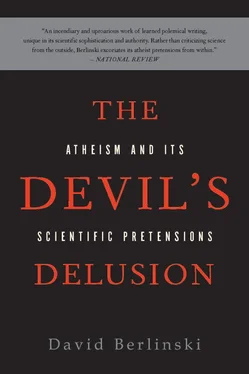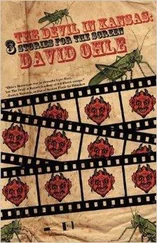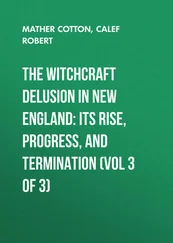The God of the Gaps? I am prepared with the best of them to revile and denounce him. It is easy enough to do just that, one reason that so many scientists are doing it. But why not say with equal authority that for all we know, it is the God of Old who continues to preside over the bent world with His accustomed fearful majesty, and that He has chosen to reveal Himself by drawing the curtain on His own magnificence at precisely the place in which general relativity and quantum mechanics should have met but do not touch? Whether gaps in the manifold of our understanding reveal nothing more than the God of the Gaps or nothing less than the God of Old is hardly a matter open to rational debate.
It is in this respect discouraging time and again to see the matter discharged in a peevish display of vanity. In considering the possibility that the facts of biology might suggest an intelligent designer, which surely they do, Emile Zuckerkandl has found it difficult to contain his indignation. Writing in the journal Gene, he overflowed into epithets: “The intellectual virus named ‘intelligent design.’ …This virus certainly is a problem in the country…. the ‘creationists’… have decided some years ago… to dress up in academic gear and to present themselves as scholars… laugh off this disguise. Their…erroneous beliefs are weighty reasons to keep them in check…. they try to foster on society… some enterprising superghost. Naïve members of the public… a comical invitation… the wrong foot—the only foot on which promoters of intelligent design can get around… peddled to the public. The minority of ‘intelligent designers’ who have any true interest in biology… The ‘intelligent designers’ ’ theme song… guided by a little angel… medieval in concept… an intellectually dangerous condition… the divine jumping disease…. humanity dug herself into ‘faiths’ like a blind leech into flesh and won’t let go…. Feeding like leeches on irrational beliefs… offensive little swarms of insects… must be taken care of by spraying biological knowledge….”
Darwinian biologists are very often persuaded that there is a conspiracy afoot to make them look foolish.
In this they are correct.
DULL, DUTIFUL, SO VERY DARWIN
There are times, I suspect, when even the most ardent among biologists suspects that enough is enough. The Old Boy is everywhere; he has long since ascended to the Pantheon; schoolchildren hymn his name, and while the man himself seems to have been sober, melancholy, and boring, his admirers have over the past twenty years or so succeeded in suggesting that his effulgence was such that had he been embedded in the ocean floor, sailors might for centuries unerringly navigate by his luster. If Richard Dawkins has not yet proposed renaming various English banknotes in Darwin’s favor, this is only because of late he has been too busy counting them.
Enough is enough.
The effort by Darwinian biologists to promote Darwin is simply explained. Within the English-speaking world, Darwin’s theory of evolution remains the only scientific theory to be widely championed by the scientific community and widely disbelieved by everyone else. No matter the effort made by biologists, the thing continues to elicit the same reaction it has always elicited: You’ve got to be kidding, right? There is wide appreciation of the fact that if biologists are wrong about Darwin, they are wrong about life, and if they are wrong about life, they are wrong about everything.
Mindful of what is at stake—everything—biologists resemble the war horses mentioned in Job 39:19–25: “He saith among the trumpets, Ha, ha.” If they cannot fight the battles at hand, they are eager to refight the battles they have won. For Eugenie Scott, Paul Gross, Barbara Forrest, Robert Pennock, or Lawrence Krauss, it is yet 1925. John Scopes is in the dock. Clarence Darrow is at his side. And in the small towns where the prairie winds blow, the forces of right thinking are still occupied in doing battle for men’s souls.
Suspicions about Darwin’s theory arise for two reasons. The first: the theory makes little sense. The second: it is supported by little evidence. In his very long posthumous treatise, The Structure of Evolutionary Theory, Stephen Jay Gould explained “the bare bones” of natural selection in this way: “Organisms enjoying differential reproductive success will, on average, be those variants that are fortuitously better adapted to changing local environments.” Those variants that are “better adapted” are, of course, precisely those “enjoying differential reproductive success.” What else could they be? Biologists believe that tautologies play an unsuspected role in scientific thought and are for this reason worthy of respect. Of course they do.
As one might expect, a theory whose assumptions are empty may be widely confirmed by evidence whose relevance is negligible. Just how and when do species arise? The standard view throughout much of the twentieth century has been that geographical barriers, such as a mountain range or an open body of water, are necessary to force an ancestral population to diverge.
In a study reported in the November 20, 2007, edition of Science Daily, Vicki Friesen, a professor of biology, observed: “While that model fits for many parts of the natural world, it doesn’t explain why some species appear to have evolved separately, within the same location, where there are no geographic barriers to gene flow.” And, indeed, some species have evolved separately within the same location. Friesen’s own research indicated that the band-rumped storm petrel shares its nesting sites in sequence with other petrels. This result conflicts with the standard view. In Origins, Darwin himself argued for just this possibility.
I have every confidence in Dr. Friesen’s research and no way in which to dispute it. I am not about to investigate the band-rumped storm petrel. It is her conclusion that must give pause. It is “exciting,” she affirms, “to be able to verify Darwin’s original theory!”
But no theory has been confirmed since every possibility has been justified. Speciation proceeds in the presence of geographic barriers, and it proceeds in their absence. The demand that the facts somehow support the theory may thus be treated as it so often is in Darwinian thought, and that is as an inconvenience.
If the facts are what they are, the past is what it is—profoundly enigmatic. The fossil record may be used to justify virtually any position, and often is. There are long eras in which nothing happens. The fire alarms of change then go off in the night. A detailed and continuous record of transition between species is missing, those neat sedimentary layers, as Gould noted time and again, never revealing precisely the phenomena that Darwin proposed to explain. It is hardly a matter on which paleontologists have been reticent. At the very beginning of his treatise Vertebrate Paleontology and Evolution, Robert Carroll observes quite correctly that “most of the fossil record does not support a strictly gradualistic account” of evolution. A “strictly gradualistic” account is precisely what Darwin’s theory demands: It is the heart and soul of the theory.
But by the same token, there are no laboratory demonstrations of speciation either, millions of fruit flies coming and going while never once suggesting that they were destined to appear as anything other than fruit flies. This is the conclusion suggested as well by more than six thousand years of artificial selection, the practice of barnyard and backyard alike. Nothing can induce a chicken to lay a square egg or to persuade a pig to develop wheels mounted on ball bearings. It would be a violation, as chickens and pigs are prompt to observe and often with indignation, of their essential nature. If species have an essential nature that beyond limits cannot change, then random variations and natural selection cannot change them. We must look elsewhere for an account that does justice to their nature or to the facts.
Читать дальше












